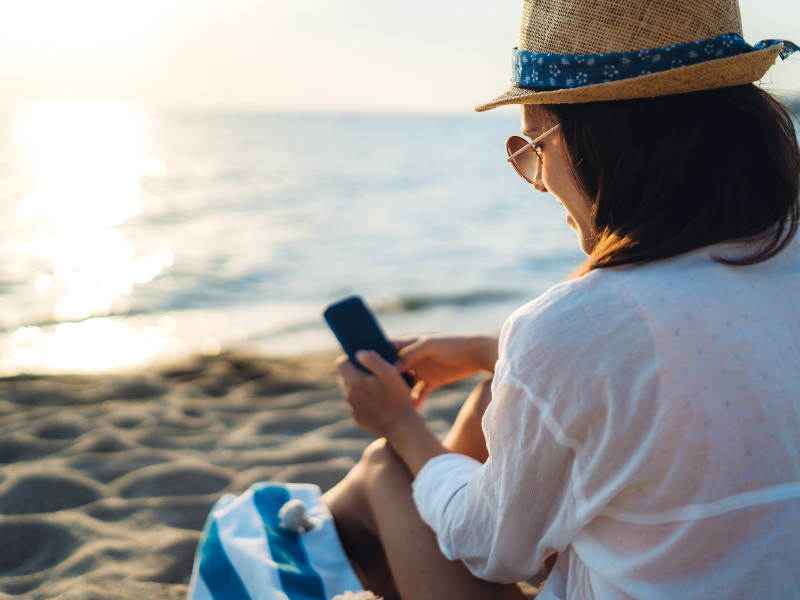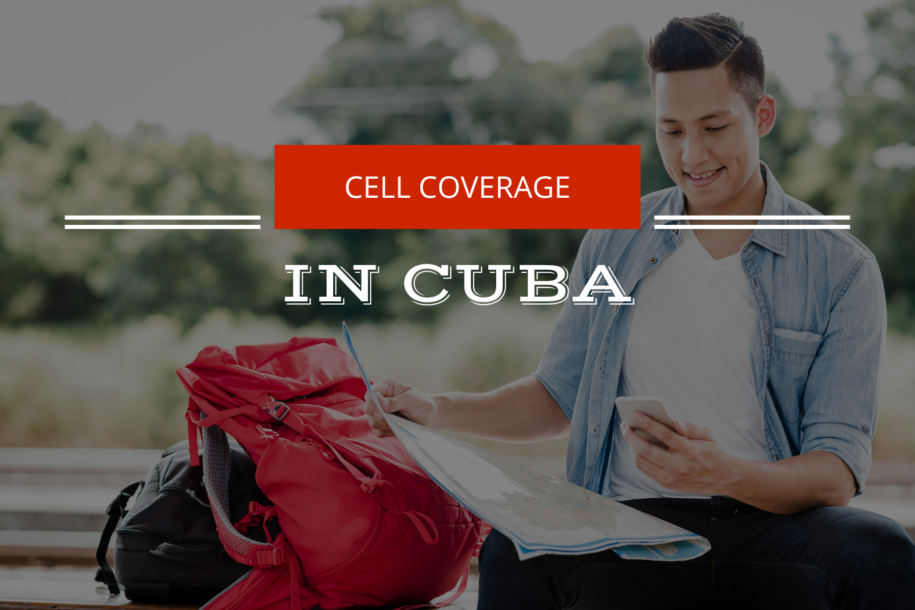As you plan your trip to this Caribbean gem, one important aspect to consider is how to stay connected with loved ones back home and navigate communication challenges while exploring this beautiful country.
This guide offers comprehensive advice on how to navigate these communication obstacles, ensuring you remain in touch with the world during your visit.
Let’s dive in and discover the cell coverage in Cuba.
Table of Contents
Understanding cell coverage in Cuba

Cuba’s telecommunications landscape is unique, shaped by historical and political factors. ETECSA (Empresa de Telecomunicaciones de Cuba S.A.) stands as the primary provider, offering both cellular and internet services across the island.
While efforts have been made to expand coverage, challenges persist, particularly in rural areas.
Planning ahead for communication
Before setting foot in Cuba, it’s essential to plan ahead for communication. Researching coverage maps provided by ETECSA can offer insights into areas with reliable cell coverage. Prioritize key destinations on your itinerary and identify potential communication blackspots to mitigate disruptions. Consider contacting your accommodation in advance to inquire about the availability of Wi-Fi or any specific communication services they offer.
Internet and Wi-Fi in Cuba
Access to the internet in Cuba has improved over the years, but it remains more restricted compared to most other countries. Most guesthouses, known as casas particulares, do not offer Wi-Fi. Instead, travelers rely on public Wi-Fi hotspots available in designated areas, but more on that later.
Wi-Fi hotspots and cards
Wi-Fi hotspots are commonly found in public plazas, parks, and most hotels in cities frequented by tourists. To access the internet, you will need a Wi-Fi card, which provides one hour of internet access and costs around 25 Cuban Pesos (CUP). These cards can be purchased at hotels and ETECSA (Empresa de Telecomunicaciones de Cuba S.A.) offices, the national telecommunications company.
Due to frequent shortages, locals often resell these cards at higher prices on the street, sometimes accepting foreign currency. It’s advisable to buy several Wi-Fi cards in Havana at the start of your trip to avoid long queues and closed points of sale later on. When using these cards, connect to a Wi-Fi hotspot by entering the login details provided on the card.
Tips for using Wi-Fi
- Plan ahead: Buy multiple Wi-Fi cards early in your trip.
- Hotspot locations: Familiarize yourself with hotspot locations in the cities you visit.
- Be patient: Expect slower speeds and occasional connectivity issues.
Telephoning from Cuba
Making international phone calls from Cuba can be quite expensive.
Here are your options to consider.
Phone cards
You can purchase a phone card from ETECSA to use on public phones. This method allows for international calls but comes with the risk of being cut off once the card runs out.
Hotel phones
Calling from a hotel is more convenient, as it avoids the risk of disconnection. Although hotel rates may be slightly higher, they provide a more stable connection. To make an international call from Cuba, dial 119 followed by the country code and phone number.
Tips for telephoning
- Consider alternatives: Use internet-based calling services when connected to Wi-Fi to save money.
- Emergency contacts: Keep a list of essential contacts for emergencies.
Global roaming in Cuba
Your mobile phone can work in Cuba if it meets specific requirements:
- Frequency band compatibility: Ensure your phone operates on the 900MHz (3G), 2100MHz (3G), or 1800MHz (4G) frequency bands.
- Network agreement: Verify that your service provider has a roaming agreement with Cubacel, Cuba’s mobile network.
- Global roaming activation: Ensure your global roaming service is activated.
Tips for roaming
- Check compatibility: Verify with your provider before traveling.
- Limit usage: Use roaming sparingly due to high costs, primarily for essential texts and calls.
Getting a Cuban SIM Card
Cuba offers tourist SIM packages called CubacelTur. While these physical SIM cards can occasionally be purchased locally, it’s advisable to buy them online in advance due to frequent shortages. You can pick them up at Jose Marti airport terminals 2 or 3, most other airports, and ETECSA offices throughout Cuba.
The SIM card costs approximately $30 USD and includes 6GB of mobile data, 100 minutes of local calls, and 100 local SMS messages. Note that top-ups are available only for mobile data, not for calls or SMS. The SIM card is valid for 30 days after activation. Suena Cuba is a popular website for purchasing the CubacelTur SIM card.
For a data-only option, you can buy an e-SIM for Cuba. Most locals and businesses communicate via WhatsApp or Messenger, making a data plan sufficient for most communication needs. Currently, Airalo is the only provider offering e-SIMs in Cuba.
CubacelTur SIM
This SIM card provides 6GB of mobile data, 100 minutes of local calls, and 100 local SMS for approximately 30 USD, valid for 30 days post-activation. Due to occasional shortages, it’s best to purchase this SIM card online in advance and pick it up at airports or ETECSA offices upon arrival.
e-SIMs
For data-only needs, you can buy an e-SIM, available from Airalo. This is a convenient option as most locals and businesses in Cuba use WhatsApp or Messenger for communication. Ensure your phone is unlocked and compatible with the 900MHz (3G) or 1800MHz (4G) frequency bands.
Tips for SIM Cards
- Pre-purchase: Buy your CubacelTur SIM online to ensure availability.
- Stay data-focused: Use data for internet-based communication to avoid high call and SMS charges.
Postal services in Cuba
Sending postcards from Cuba is a reasonably reliable option, though anything larger may get lost. Attractive postcards featuring iconic images from Cuban history are widely available. Pre-paid postcards can be purchased and sent internationally for about 25 CUP.
Tips for postal services
- Stick to postcards: Avoid sending large packages to prevent loss.
- Choose iconic designs: Opt for unique postcards featuring Cuban culture and history.
Practical tips for staying connected
How do I connect to Wi-Fi in Cuba?
You’ll need to buy a Nauta Wi-Fi card from an Etecsa location, which provides a login and password for connecting to a Wi-Fi hotspot. Alternatively, you can tether to someone else’s data; many individuals offer this service in public areas for a fee.
Will my cell phone work in Cuba?
Yes, if your phone provider has a roaming contract with ETECSA, your phone should work in Cuba. However, due to high costs, it’s recommended to use your phone mainly for text messaging. Check the ETECSA website for a list of compatible providers.
Wi-Fi in casas particulares
While some casas in Havana now offer free Wi-Fi, most casas across Cuba do not. It’s best to rely on public Wi-Fi hotspots or plan for minimal internet usage.
Digital nomading in Cuba
Cuba is not ideal for digital nomads due to its slow and unreliable internet. Many sites are blocked due to the US embargo, so downloading a good VPN is essential for accessing restricted content. Patience is crucial for those attempting to work remotely from Cuba.
Tips for digital nomads
- Have a backup plan: Download necessary work files and plan for offline work.
- Use VPNs: Ensure access to restricted sites and secure your internet connection.
Final advice: embrace the disconnect
Our best advice for staying connected in Cuba is to embrace the opportunity to disconnect. The island’s slow and sporadic connectivity can be frustrating, but it also provides a rare chance to unplug and fully immerse yourself in the Cuban experience. Plan ahead, but be prepared to enjoy a digital detox as you explore this unique and captivating destination.
Additional tips
- Emergency contacts: Always keep important contact numbers written down in case of phone issues.
- Local assistance: Don’t hesitate to ask locals for help with finding Wi-Fi hotspots or purchasing SIM cards.
- Stay informed: Keep abreast of any changes in communication regulations or services in Cuba.
By following these guidelines, you can navigate the communication challenges in Cuba more effectively, ensuring you stay connected when necessary while also enjoying the opportunity to disconnect in this beautiful, historically rich island nation.
Conclusion
By understanding the intricacies of cell coverage in Cuba and implementing strategic approaches such as planning ahead, choosing the right provider, leveraging Wi-Fi hotspots, and embracing offline communication alternatives, you can ensure connectivity throughout your journey.
As you explore Cuba’s vibrant streets, dance to the rhythm of its music, and marvel at its natural wonders, let communication be the bridge that connects you with loved ones and fellow travelers alike. Embrace the spirit of adventure, adapt to the ebb and flow of connectivity, and cherish every moment of your Cuban odyssey.
Remember, while communication is vital, the true essence of travel lies in the connections forged and experiences shared along the way.
